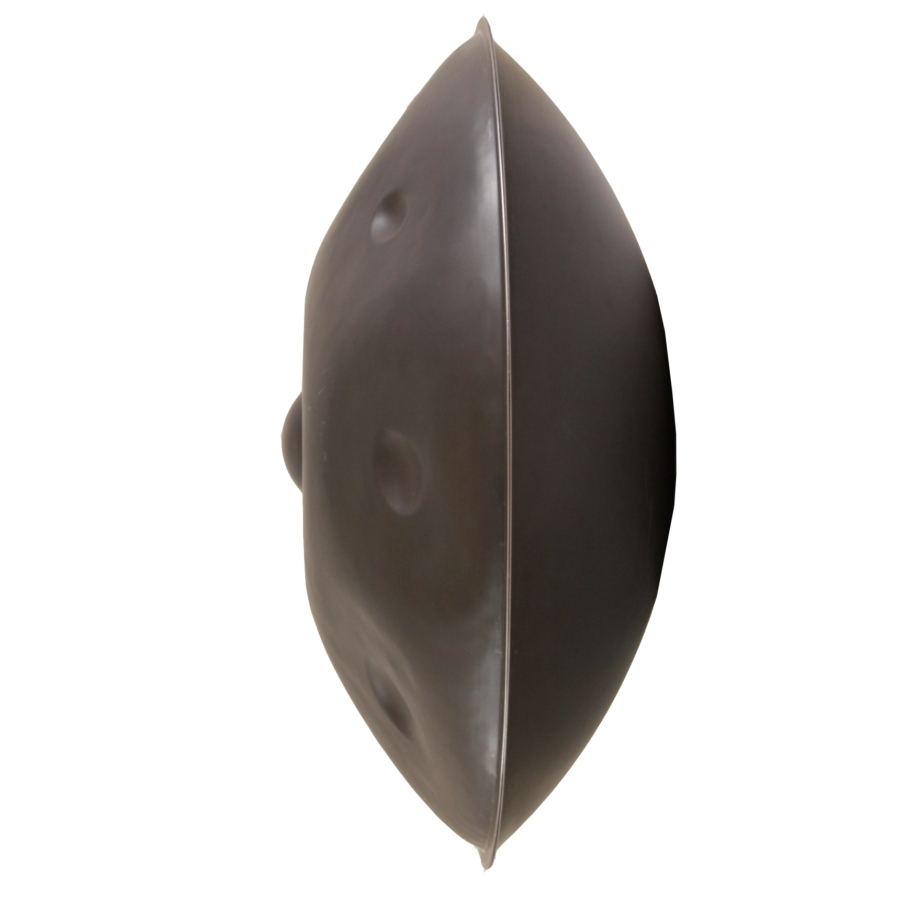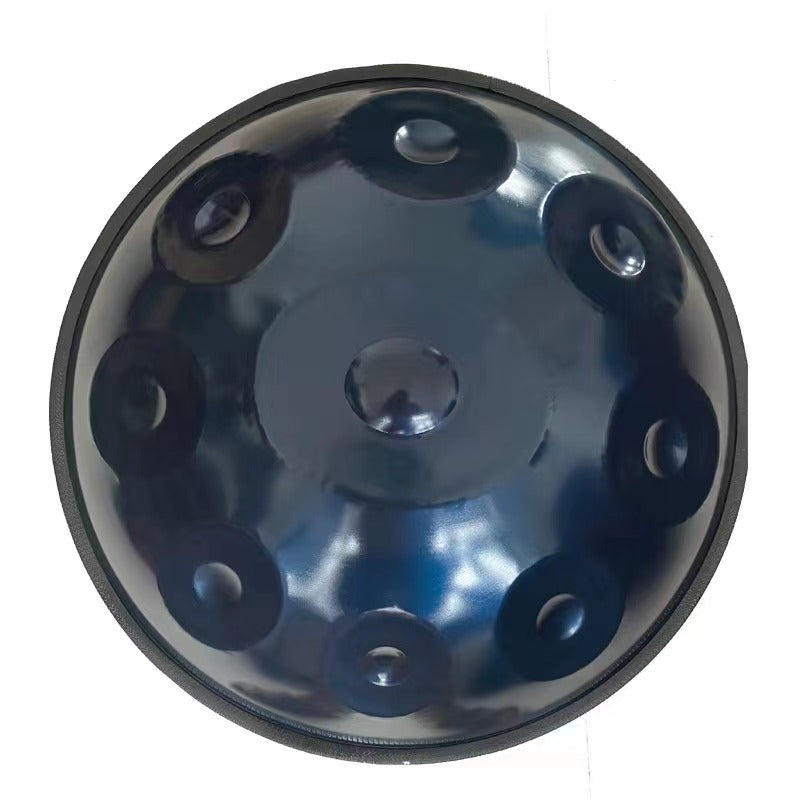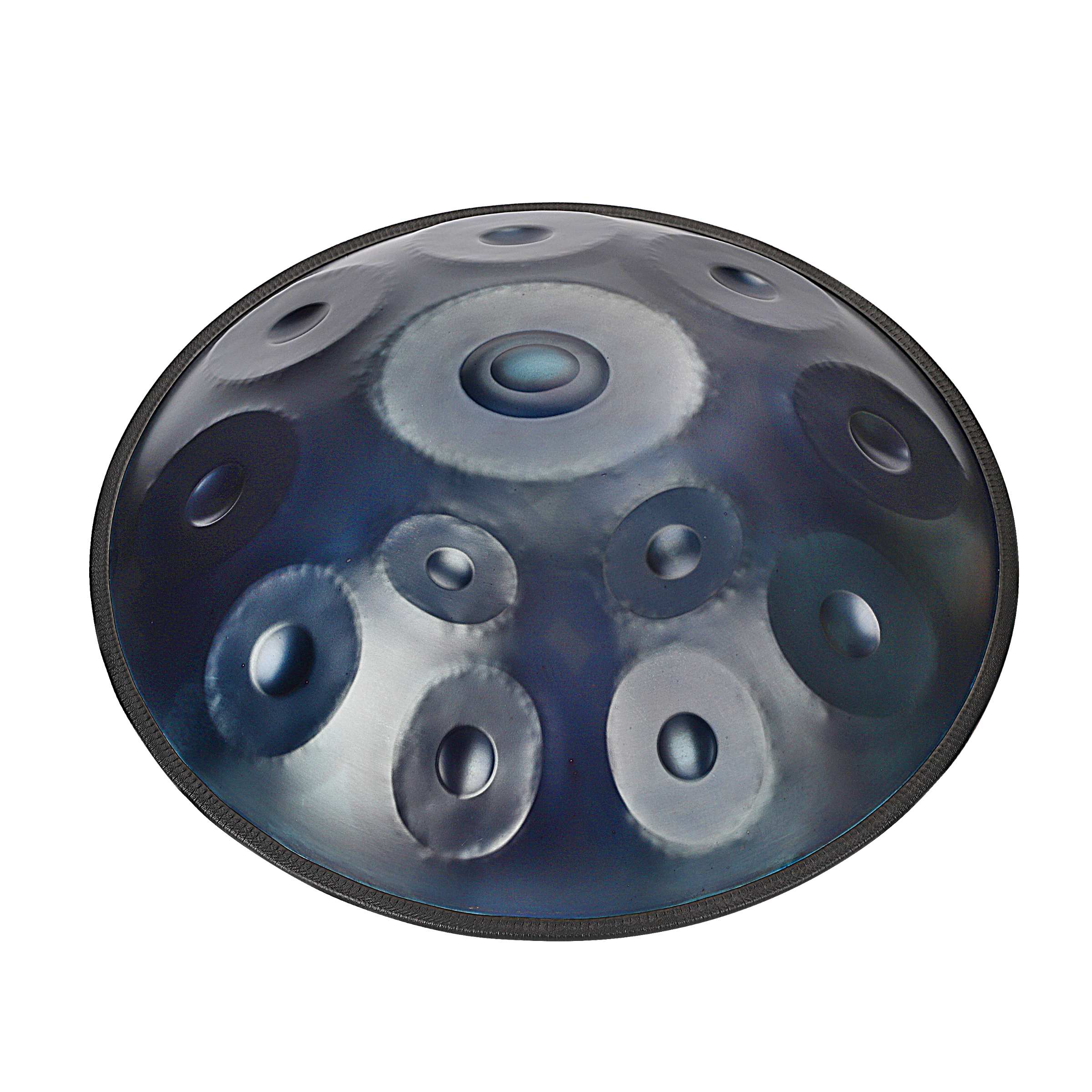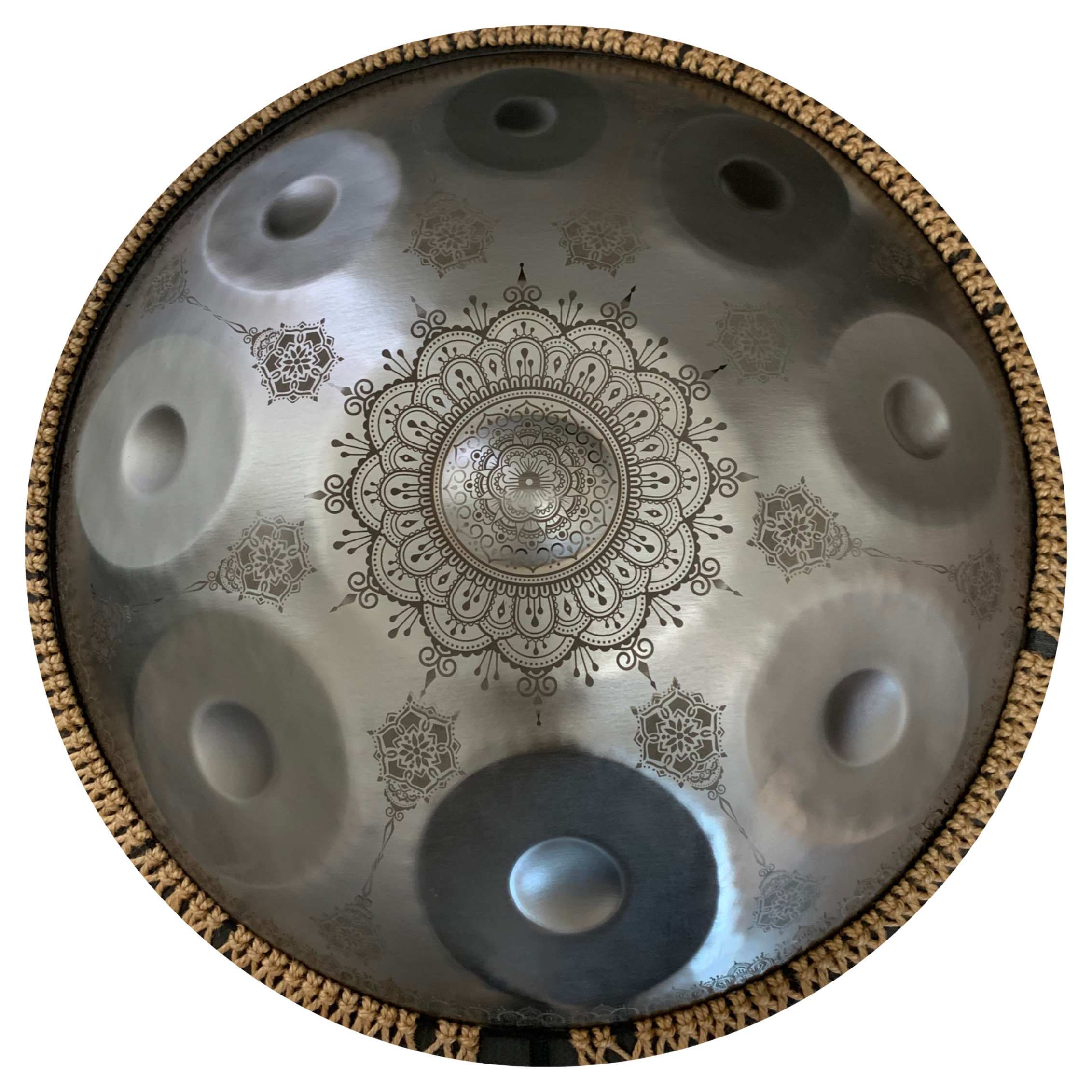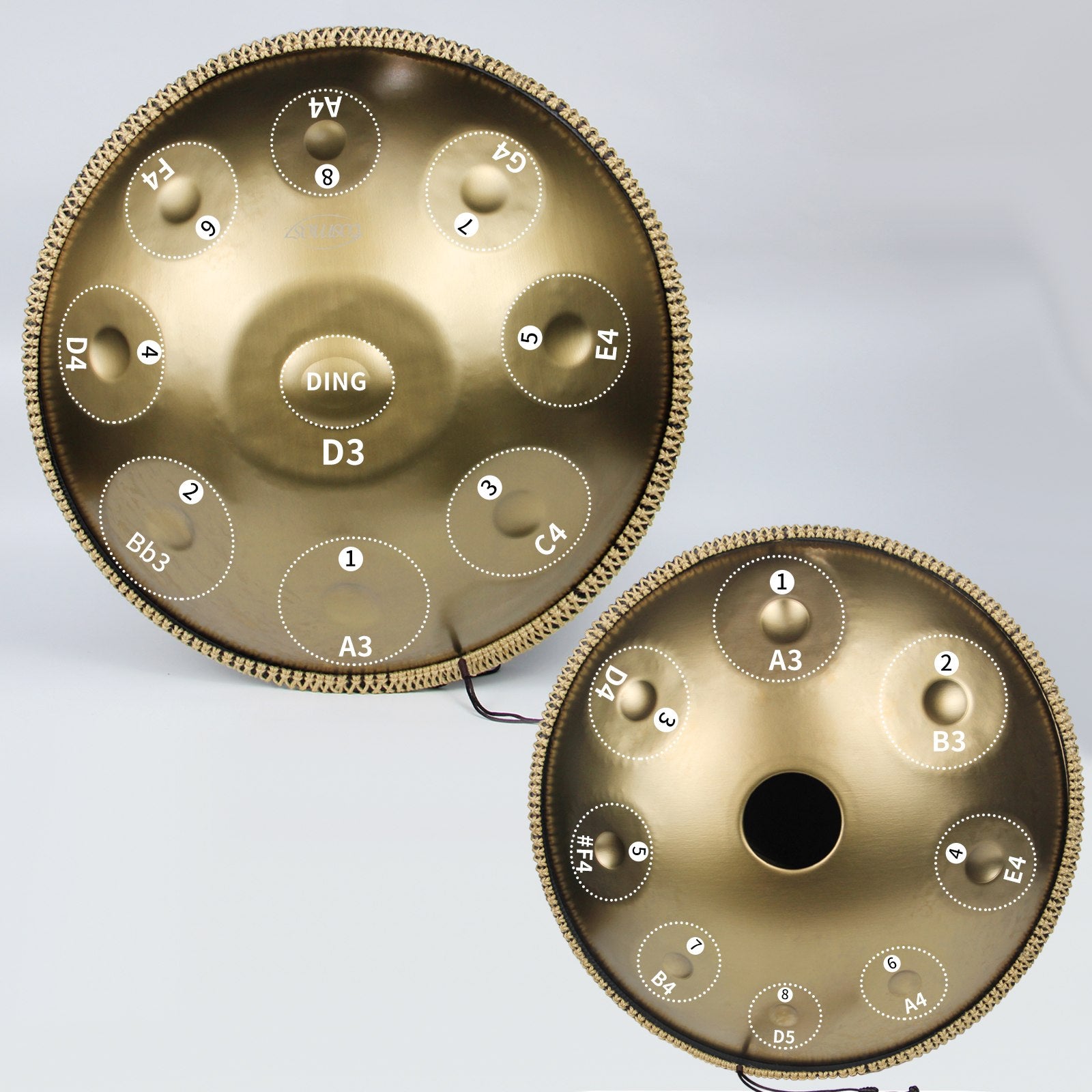Le handpan, également appelé hang drum ou instrument handpan, est une invention captivante qui a conquis le cœur des musiciens et des fans. Ses tonalités apaisantes et envoûtantes en ont fait un choix populaire pour le plaisir, la méditation et les performances professionnelles. Choisir le handpan peut être à la fois gratifiant, surtout compte tenu de la large gamme d'options disponibles aujourd'hui. Ce guide complet vise à vous aider à naviguer dans le processus de choix d'un handpan qui résonne avec vos préférences et vos besoins.

Comprendre le Handpan
Avant de plonger dans le processus de sélection, il est crucial de comprendre ce qu'implique exactement un handpan. Le handpan est un instrument de percussion en acier composé de deux coques fusionnées pour créer une chambre. La coque supérieure, connue sous le nom de côté "Ding", contient une note entourée de champs de tonalité qui produisent différentes hauteurs. La coque inférieure ou côté "Gu" comprend généralement un trou pour améliorer la résonance. Il peut parfois être utilisé pour générer des notes de basse.
Définir vos objectifs musicaux
La première étape pour choisir un instrument handpan est de clarifier vos objectifs. Réfléchissez à ces questions pour orienter votre prise de décision ;
Quel genre de musique suis-je intéressé à jouer ?
Comment envisagez-vous d'incorporer le handpan dans votre parcours ? Je penche vers des mélodies entraînantes ou des tonalités contemplatives et sincères ?
Vais-je utiliser le handpan, pour des performances, des collaborations ou des fins thérapeutiques ?
Quel est mon budget pour acheter un handpan ?
Avoir des objectifs vous aidera à réduire vos choix et à vous concentrer sur la recherche d'un handpan qui correspond à vos exigences spécifiques.
Aspects Clés à Considérer
1.Matériaux et Artisanat
La qualité des matériaux et de l'artisanat a un impact significatif sur le son et la longévité d'un handpan. Les handpans sont généralement fabriqués en acier, en acier inoxydable ou en acier brut. Chaque matériau a ses caractéristiques ;
- Acier nitruré : Connu pour son son net et sa résistance à la rouille et à la corrosion.
- Acier inoxydable : Offre un ton et une durabilité exceptionnels.
- Acier brut : Offre un son mais nécessite un entretien régulier pour prévenir la rouille.
Les handpans premium sont méticuleusement fabriqués par des artisans qui accordent chaque champ de note. Privilégiez les instruments créés par des fabricants loués pour leur savoir-faire et leur attention méticuleuse aux détails.
2. Échelle et accordage
Les handpans sont disponibles dans des gammes, chacune offrant un ensemble de notes et de qualités tonales. Les gammes populaires incluent mineur, do majeur et Ake Bono.
Lors de la sélection d'un handpan, il est important de prendre en compte vos goûts :
- Les gammes majeures sonnent généralement joyeuses et entraînantes.
- Les gammes mineures évoquent souvent l'introspection et l'émotion.
Écouter des enregistrements d'échelles peut vous aider à trouver celle qui résonne le plus avec vous.
La taille et le poids jouent un rôle dans le son et la portabilité d'un handpan. Les handpans plus grands ont tendance à produire des tons tandis que les plus petits offrent des hauteurs plus élevées et sont plus faciles à transporter. Pensez à l'endroit et à la manière dont vous allez utiliser votre handpan. Si vous prévoyez de voyager avec, un modèle compact et léger peut être plus adapté.
Les handpans se déclinent en une gamme de prix en fonction de facteurs tels que le fabricant, les matériaux utilisés et le type d'échelle. Bien qu'il puisse être tentant d'opter pour l'option la moins chère, investir dans un handpan de haute qualité peut grandement améliorer sa qualité sonore et sa durabilité. Fixez un budget qui trouve un équilibre entre l'accessibilité et la qualité, en veillant à obtenir un instrument qui répond à vos exigences pour les années à venir.
Vérifier la réputation des marques est crucial lors de l'achat d'un handpan. Des marques établies comme PANArt, connues pour avoir créé le hang drum, ainsi que des fabricants respectés, ont bâti des réputations pour la fabrication d'instruments de haute qualité.
Assurez-vous de lire des avis, de regarder des vidéos et de demander des conseils à des joueurs avant de faire un achat pour vous assurer que vous achetez auprès d'une source fiable. Pour sélectionner le bon handpan, il est bénéfique d'essayer des modèles en personne en visitant un magasin de musique ou en assistant à un festival de handpan. Cette expérience pratique vous permet de tester les handpans et de ressentir leur son de première main. Lors des tests, concentrez-vous sur ces aspects :
- Qualité sonore : Écoutez pour la clarté, la résonance et la sustain sans harmoniques.
- Confort et Jouabilité : Assurez-vous que l'instrument est confortable dans vos mains et que vous pouvez atteindre toutes les notes facilement.
- Réponse : Voyez comment l'instrument réagit aux techniques de jeu comme les tapotements ou les frappes plus fortes.
Si une visite en personne n'est pas possible, de nombreux vendeurs réputés proposent des échantillons sonores et des vidéos en ligne. Bien que ce ne soit pas aussi bien que de l'essayer soi-même, ces ressources peuvent tout de même offrir des aperçus sur la qualité des instruments.
Une fois que vous avez choisi votre tambour handpan idéal, il est crucial de bien l'entretenir pour préserver son son et son apparence. Voici quelques conseils d'entretien :
- Nettoyage : Essuyez régulièrement la surface avec un chiffon pour enlever les empreintes digitales et les huiles.
- Évitez d'utiliser des produits chimiques qui pourraient nuire au matériau en acier.
- Instructions de stockage : Gardez votre handpan dans un endroit. Utilisez un sac ou une housse pour le protéger lorsqu'il n'est pas joué ou transporté.
- Conditions de jeu : Évitez de jouer de votre handpan à des températures élevées ou dans une humidité élevée, car ces facteurs peuvent affecter le métal et l'accord.
- Entretien : Avec le temps, votre handpan pourrait avoir besoin d'être réaccordé. Consultez un accordeur spécialisé dans les handpans pour vous assurer que votre instrument reste en bon état.
Explorer la polyvalence des handpans
L'une des caractéristiques du handpan est sa polyvalence. Il s'intègre bien dans des genres musicaux et des contextes allant des performances solo apaisantes aux pièces animées. Voici quelques façons de libérer le potentiel de votre handpan :
- Performances Solo : Les riches tonalités et la disposition conviviale du handpan en font un instrument parfait pour les performances. Expérimentez avec les gammes et les techniques de jeu pour créer des pièces musicales.
- Collaborations : Faites équipe avec des musiciens pour explorer des sons et des styles musicaux. Le handpan complète des instruments, comme les guitares, les flûtes et les instruments de percussion.
- Enregistrement et Production : Intégrez le handpan dans vos projets d'enregistrement. Son son distinct peut enrichir une variété de productions musicales, des morceaux aux chansons pop.
Utilisations thérapeutiques :
Les sons doux du handpan en font un outil fantastique pour la musicothérapie, la méditation et la relaxation. Utilisez-le pour créer des mélodies qui améliorent le bien-être.
Ressources d'apprentissage et de croissance
Pour les débutants, il existe des ressources pour vous aider dans votre développement en tant que joueur de handpan :
- Tutoriels et cours en ligne ; De nombreux joueurs de handpan expérimentés proposent des matériaux d'instruction en ligne couvrant les techniques fondamentales, les méthodes de jeu et la composition musicale.
- Engagement communautaire et forums ; S'engager avec les communautés et forums de handpan peut fournir des idées, du soutien et des opportunités de se connecter avec des passionnés.
- Participation à des ateliers et des festivals ; Assister à des ateliers et des festivals peut offrir des expériences d'apprentissage pratiques et une occasion d'interagir avec d'autres musiciens.
- Matériaux de lecture comme des livres et des guides ; diverses publications sont disponibles offrant des informations détaillées sur le jeu du handpan, son contexte historique, ainsi que des conseils d'entretien.
Pensées finales
Sélectionner le handpan ou l'instrument implique de prendre en compte des facteurs tels que la composition matérielle, le type d'échelle, les dimensions, les options de prix, ainsi que la réputation de la marque. En comprenant ces aspects et en expérimentant avec différents modèles, vous pouvez découvrir le handpan qui résonne avec vos aspirations musicales. Un entretien régulier de votre instrument, ainsi que l'exploration de sa polyvalence, garantira le plaisir de son son pendant des années à venir. Que vous soyez musicien ou que vous commenciez tout juste, jouer du handpan peut offrir un parcours musical gratifiant qui va au-delà des normes habituelles. Il vaut la peine de consacrer du temps à explorer et à expérimenter avec les handpans, car cet investissement vous conduira à un compagnon qui captive vraiment et apporte de la joie. Gardez à l'esprit que le chemin de la maîtrise et du plaisir du handpan est aussi remarquable que les mélodies qu'il produit, alors savourez chaque moment, embrassez le processus d'apprentissage et laissez votre exploration se déployer avec grâce.

